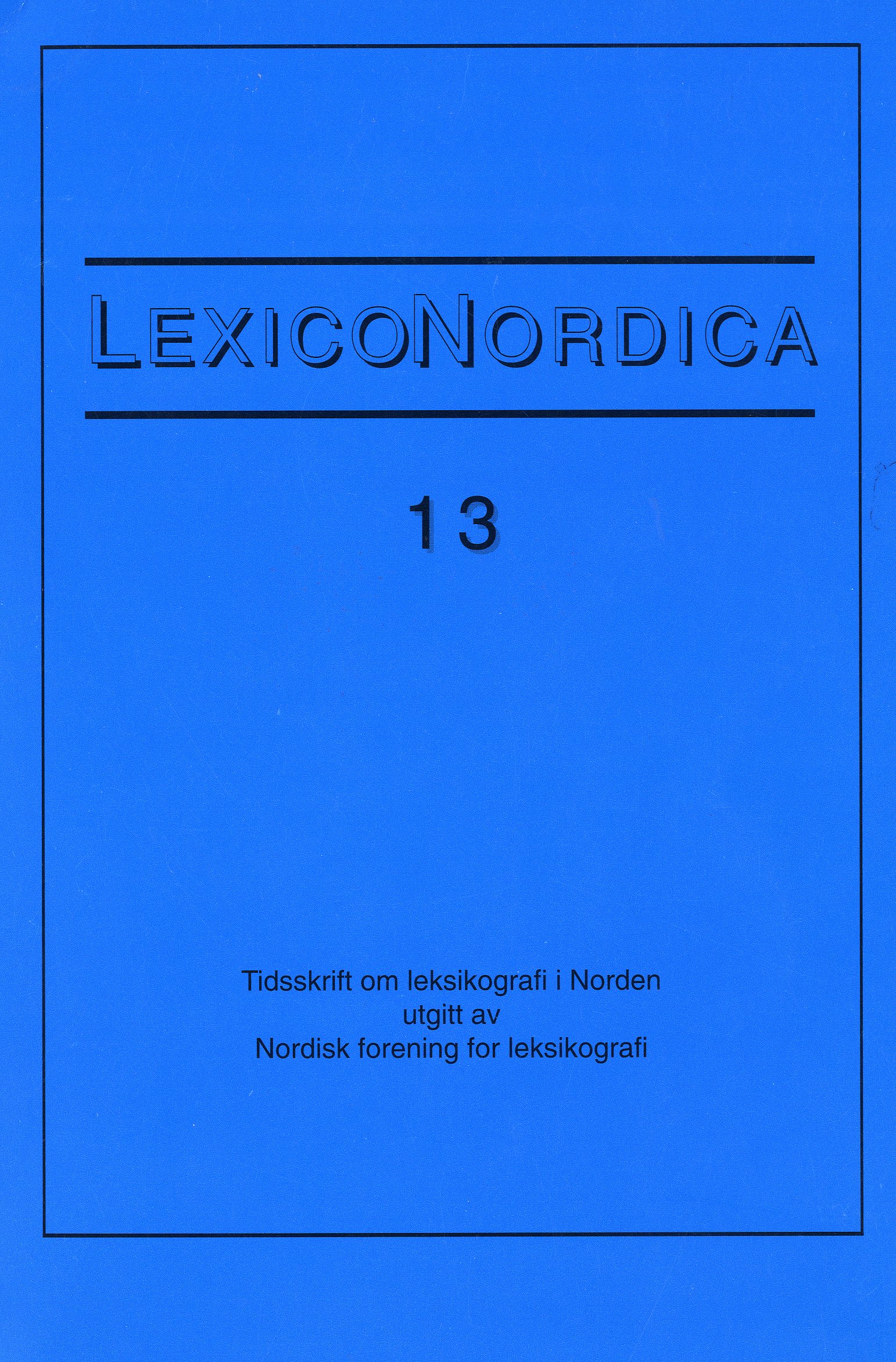Dei diakrone aspekta ved Norsk Riksmålsordbok og Norsk Ordbok
DOI:
https://doi.org/10.7146/ln.v0i13.18569Resumé
This article is an attempt to explore the borderlines between synchrony and
diachrony in dictionaries in the form of a case study of the Norwegian national dictionaries
Norsk Riksmålsordbok (covers the Danish-derived language variety
Riksmål or Bokmål), and Norsk Ordbok (covers the Norwegian dialects and the
dialect-derived standard variety Nynorsk). Both these dictionaries describe contemporary,
20th-century Norwegian, but with a diachronic aspect, reaching back to the
roots of the modern Norwegian literary traditions in the first half of the 19th century.
While their Danish and Swedish counterparts are explicitly diachronic, using
chronology as the main organizing principle of their microstructures, the Norwegian
dictionaries treat their material as synchronic, but through their source references,
they allow the reader to deduce a chronological development in the use and the
semantic structure of the lemma. Because of this, they may be called implicitly diachronic.
But since this possibility is often rather poorly utilized; one might also
regard them as synchronic dictionaries with a diachronic aspect. Both dictionaries
are discussed in some detail, as to their self-presentation and their editorial principles,
and a number of concrete entries are quoted and commented upon in the light
of the general discussion.
Downloads
Publiceret
Citation/Eksport
Nummer
Sektion
Licens
LexicoNordica og forfatterne





